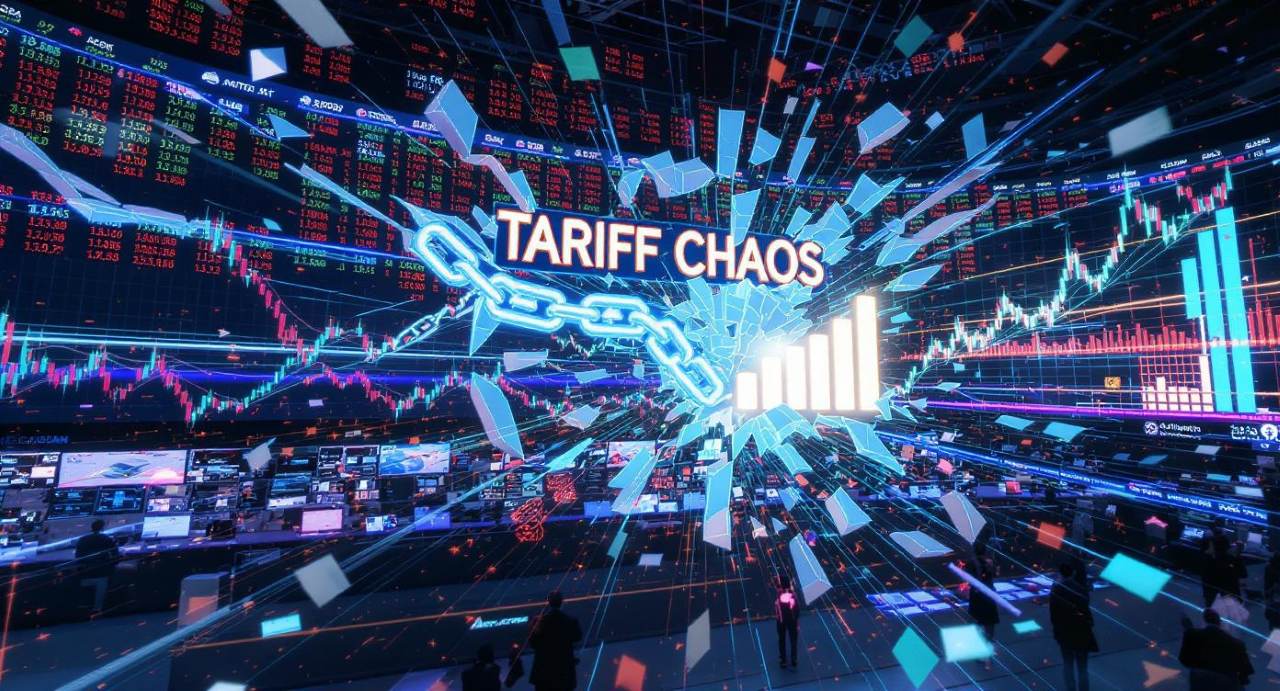
President Donald Trump’s “Liberation Day” announcement of tariffs on April 2 shook financial markets, wiping out approximately $6 trillion in market value in just two trading days.
Hedge funds and institutional investors—so-called “smart money”—were forced to dump shares, while strategy analysts urged their clients to flee and close positions while they still could.
Retail investors see opportunity in chaos
By contrast, retail traders — colloquially called “dumb money” — saw the stock market on sale. The collapsed prices were viewed as a sudden buying opportunity, reminiscent of the nearly miraculous recovery after the COVID-19 pandemic low, when tech stocks took off alongside the AI boom.
And, it seems, they were right: one week later, on April 9, Trump backtracked and suspended most of his tariffs, sending the S&P 500 futures soaring 18%.
Retail investors scooped up equities at a record pace throughout April’s stock-market plunge. Between April 28 and 29, the share of volume controlled by individual investors hit 36%, the highest level ever recorded—delivering about a 15% return since April 8—and net inflows into U.S. equities totaled $50 billion.
The advantage for retail traders is that they aren’t tethered to benchmarks or forced to placate concerned clients, so they’re freer to try buying the bottom and weather temporary losses.

Right now, stocks trade as if the crisis never happened. The S&P 500 sits about 4% below its all-time highs, while the Nasdaq 100 has officially shifted from a bear market into a bull market and the Nasdaq 100 futures followed its movement.
Young investors’ willingness to keep buying during market weakness makes sense. Anyone under 40 has only known bull markets in their adult life, and every downturn has been followed by extraordinary recoveries.
For example, the bear market after the COVID-19 crash five years ago lasted just 33 days—the shortest ever. The 2022 inflation scare, during which the S&P 500 fell 19% over a year, was followed by two consecutive years of returns above 20%. As of the end of July 2024, the S&P 500 went 356 days without a 2% pullback—the longest streak since 2007.
However, the dot-com crash of the early 2000s shows how brutal markets can be when this pattern fails. At the start of that collapse, retail investors displayed remarkable resilience, trying to buy what they thought were market bottoms. Unfortunately, that approach catastrophically failed: the speculative bubble was enormous, and the Nasdaq took 15 years to reclaim its previous highs.

But today, it’s indisputable: buying the dip in 2025 has been an extremely successful strategy. Still, risks lurk around every corner—every time you buy a dip, you’re pouring capital into a market that, if it keeps falling due to exogenous factors (recessions, sudden policy shifts, speculative bubbles), could accelerate its plunge precisely because of such strategies.
The safety and reliability this model has delivered so far may itself become a vulnerability and the cause of its eventual failure.
Storm clouds gathering
On the horizon are several themes that could bring instability in the coming days. Trump’s tax cuts could add pressure to the bond market, and the Federal Reserve will likely resist cutting rates in the short term as economic headwinds grow.
The bond market’s revolt against Washington’s fiscal largesse is far from over—and it will ultimately decide what happens on the fiscal front, pushing Congress to reduce the deficit.
In addition to the danger of further rises in U.S. 10-year yields and rate expectations, President Trump announced 50% tariffs on all European goods effective June 1. Thus, the S&P 500 closed the week in the red, though not at dangerously low levels.
Search for new catalysts
Now begins the search for new market catalysts: if 10-year yields continue climbing and a fresh trade war against Europe intensifies after the easing of tensions with China, we will surely see sharply negative sessions again.
In any case, one thing is certain: even if retail traders’ buying power brings the market back toward its highs in the near future, there are currently no solid foundations to support a rally beyond them.
